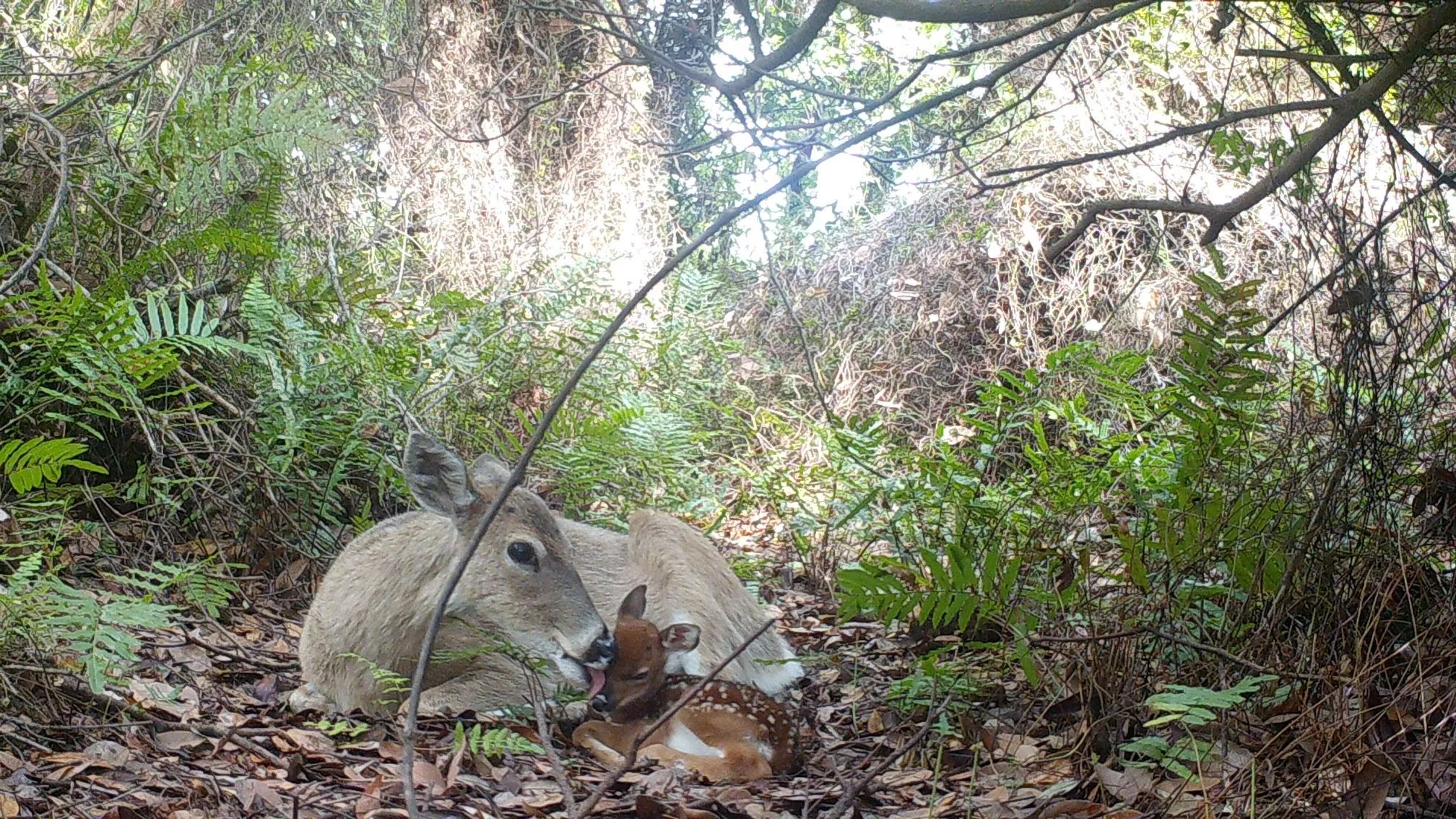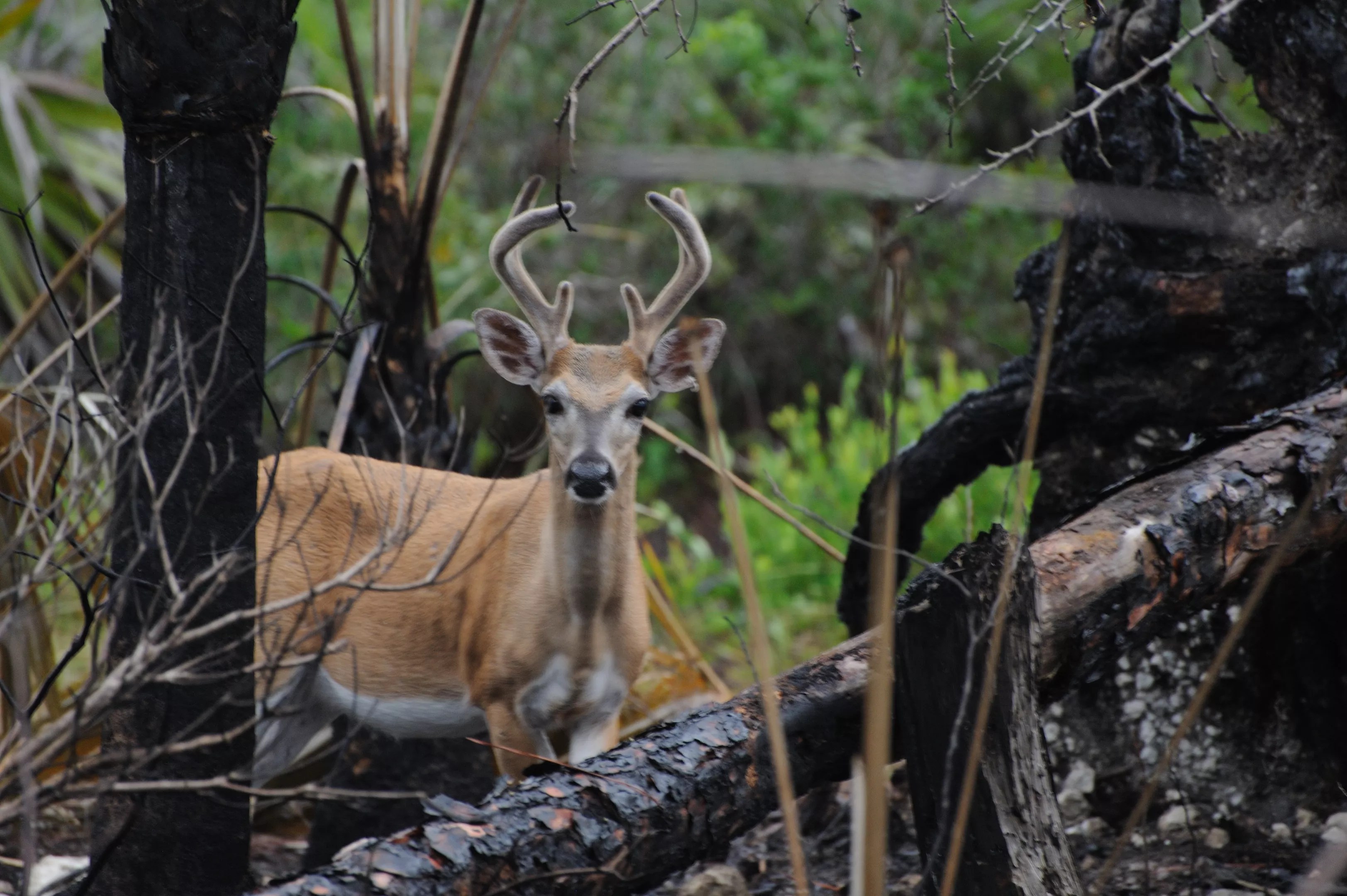
U.S. Fish and Wildlife Service, Southeast, via Twitter

Audio By Carbonatix
North America’s smallest deer can be found only in one place: the Florida Keys. The Florida Key deer is about the same height and weight of a medium dog, standing no taller than 30 inches at the shoulder. The adorable mini-Bambi once roamed the Lower Keys, but habitat destruction and poaching caused their numbers to dwindle to just a few dozen by the 1950s.
The Key deer is alive today thanks to federal efforts to protect it from extinction. But yesterday, the Trump administration signaled its intent to remove the deer from the list of endangered species. The Florida Key deer is one of the first casualties of a revised Endangered Species Act (ESA), which no longer recognizes climate change as a threat to wildlife.
The screwworm parasite infestation that killed an eighth of the Key deer population from 2016 to 2017 has been eradicated, but there are still fewer than 1,000 of the deer alive today. The animal continues to be threatened due to habitat destruction caused by human development and climate change. Key deer are at risk of being inundated by sea-level rise and intensifying storms – Hurricane Irma killed an estimated 200 deer in 2017. Seventy-six percent of the deer’s surviving habitat is expected to be lost to sea-level rise by the middle of this century.
“We know that Florida Key deer can swim, but can they swim and survive on 25 percent of their original habitat?” asks Jaclyn Lopez, Florida director of the Center for Biological Diversity.

Florida Key deer
U.S. Fish and Wildlife Service via Center for Biological Diversity
Donald Trump has safeguarded fewer plants and animals under the ESA than any other president, and the changes announced this week will make it even more difficult to protect endangered species and designate areas as critical habitats.
“Across the board, they are weakening protections of species and habitats,” says Rebecca Riley, legal director for the nature program at the Natural Resources Defense Council. “Rather than taking steps to protect those species, the Trump administration is moving in the opposite direction.”
Climate is one of the biggest threats to wildlife, and a recent United Nations report says 1 million species around the globe are at risk. The Trump administration is exempting species from critical habitat requirements if the habitat destruction is a consequence of climate change, making it much more difficult to preserve the unoccupied habitat to which wildlife is expected to migrate.
“Climate change will force species to move,” Riley says. “Ironically, the thing we need to do now is to protect the unoccupied habitat where species will migrate to. These rules make that much more difficult.”
Furthermore, future species listed as threatened will no longer receive the same benefits as endangered species the same way they do today. Down-listing an endangered species to threatened will remove all federal protections, making it legal to harm, harass, shoot, or kill.
“We used to give the benefit of the doubt to the animal,” Lopez says, “but this totally moves the bar.”
The changes to the Endangered Species Act will directly affect South Florida’s wildlife. The state’s sea turtles nest on low-lying land susceptible to sea-level rise, and the majority of known Florida bonneted bat habitats will be inundated by the end of the century.
“Climate change is happening right now, and it will have a profound impact on the biodiversity of Florida,” Lopez says. “[The state has] some of the highest biodiversity in the nation, and as a default, [it has] a lot of endangered species.”